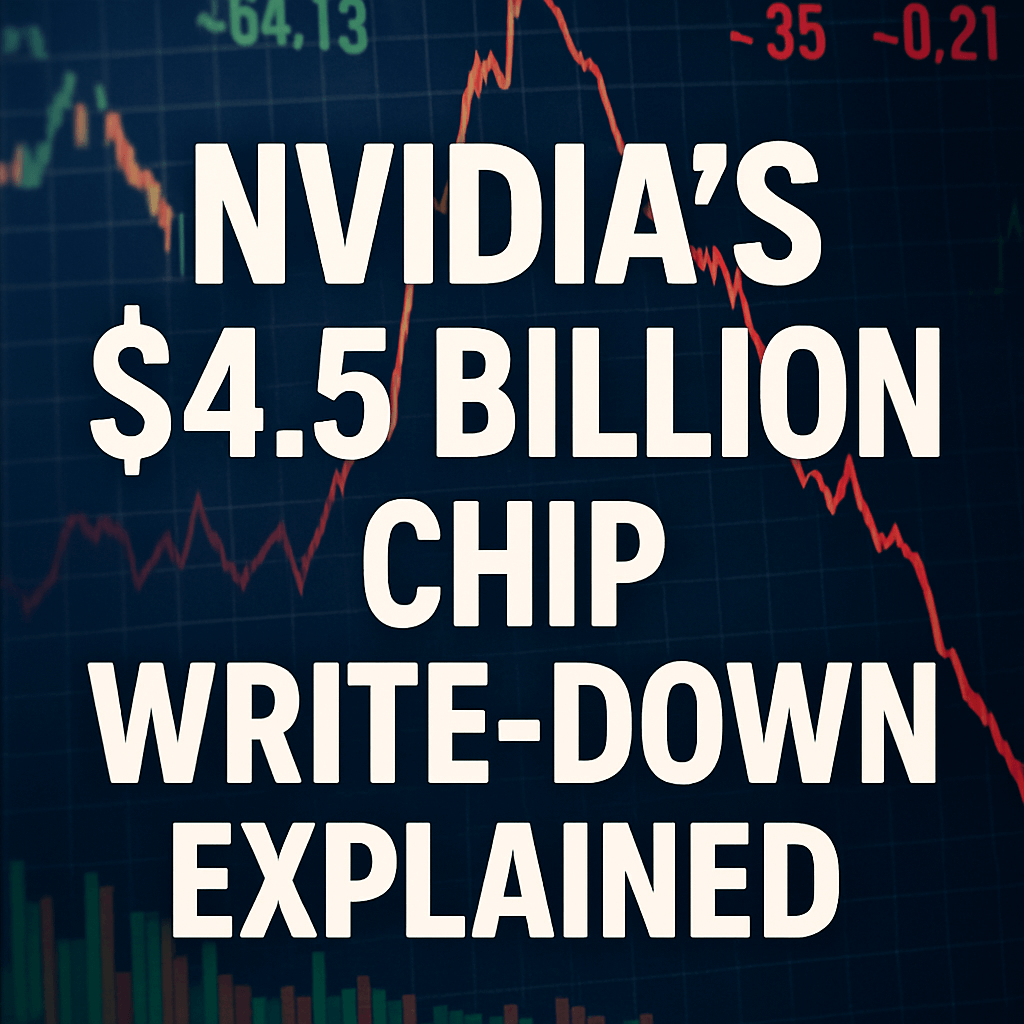Nvidia’s $4.5 Billion Chip Write-Down Explained

Nvidia’s recent quarterly earnings report unveiled a staggering $4.5 billion write-down on chips initially intended for the Chinese market, shedding light on the company’s ongoing challenges in navigating regulatory landscapes and the evolving demands of the semiconductor industry.
The Context of the Write-Down
Amid soaring demand for advanced semiconductors essential for artificial intelligence and cloud computing, the company’s significant inventory write-down starkly contrasts its otherwise booming business. The latest figures reveal a first-quarter revenue of $44.1 billion, marking a significant 69% increase year-over-year, alongside a net income of $18.8 billion, equating to a healthy 42.6% profit margin.
Regulatory Pressures Impacting Inventory Management
The core issue lies in the Biden Administration’s stringent export regulations, specifically targeting semiconductors that could potentially bolster foreign adversaries’ military and technological capabilities. In early April, the Trump Administration escalated these measures by banning the export of even second-tier chips, which has profound implications for Nvidia. The company, having initially tailored the H20 chips for the Chinese market, now finds itself holding inventory that is both challenging to reallocate and less valuable under the current regulatory circumstances.
Technical Specifications of H20 Chips
The H20 chips, while designed to be less powerful than Nvidia’s flagship GPUs, were engineered with specific parameters suitable for the demands of Chinese AI applications. This includes:
- Architecture: Based on Ampere architecture but optimized for lower computational intensity.
- Performance: Geared towards moderate AI workloads rather than the intensive tasks carried out using more robust models.
- Customization: Features tailored specifically to meet the specifications of Chinese clients, further complicating their sale to international companies.
Supply chain experts highlight that these chips are not merely excess inventory; rather, their specific design limits their applicability elsewhere, leading to analysts like Chad Autry expressing skepticism about their repurposing.
Internal Calculations and Potential Outcomes
Colette Kress, Nvidia’s CFO, remarked during the earnings call that while the company expected a total write-off of $5.5 billion from its inventory, strategic salvaging efforts reduced the overall loss to $4.5 billion.
Tax implications are also significant; the decision to write down the value of the chips not only affects cash flows but also provides an immediate tax benefit by reducing taxable income. Analysts point out that calculating future revenue against these write-offs will be critical to understanding Nvidia’s long-term financial health.
Market Reactions and Future Outlook
Despite the significant write-off, Nvidia’s core business remains robust. The company is strategically positioned to capitalize on multiple sectors, including cloud computing and AI market expansion, supported by its next-generation Blackwell GPUs that are powering innovations across platforms like Amazon’s AWS and Microsoft Azure.
Analyst opinions suggest that flooding the market with discounted H20 chips could dilute Nvidia’s brand value and disrupt its pricing strategies. Matthew Bryson from Wedbush Securities emphasized that U.S. customers would likely prefer advanced chip models, effectively making low-tier alternatives like the H20 unattractive.
Looking Ahead: Policy Implications and Supply Chain Dynamics
The fate of the undeliverable H20 chips hangs in the balance, exacerbating uncertainty within the semiconductor supply chain. Many industry experts, including Professor Alan Amling, speculate that these chips may ultimately end up discarded due to the cost-prohibitive nature of repurposing, especially given the rapid shift in regulatory environments.
Looking further, Harsh Kumar of Piper Sandler expressed cautious optimism that changes in trade policy favorable to exporters could eventually allow Nvidia to offload remaining inventory in China, further driving stock performance.
Conclusion: A Broader Impact on Semiconductor Ecosystem
The ripples from Nvidia’s inventory write-off are likely to affect its suppliers, including TSMC, Samsung, and Micron, emphasizing the interconnected nature of the semiconductor supply chain. As the situation evolves, the long-term effects on both Nvidia and its partners will need closely monitoring.